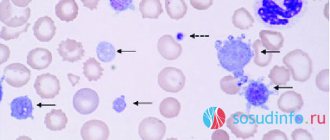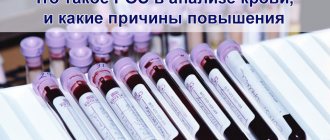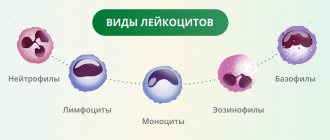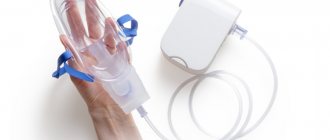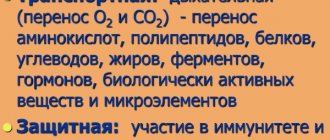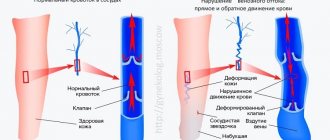Saturation (English saturation - “saturation”) of blood with oxygen shows how much of this vital gas for organs is currently contained and circulating in the blood. The indicator is expressed as a percentage. Low saturation, including during coronavirus, indicates hypoxemia, which requires urgent action. It is necessary to increase the level of oxygen in the lungs and blood to prevent complications and sometimes to save the patient's life.
Blood oxygen saturation is measured with a special device - a pulse oximeter. With the help of this express analysis, emergency doctors can obtain objective information about the state of the patient’s respiratory and circulatory system, as well as quickly make a decision on hospitalization and oxygen support. It is not always possible to quickly perform a CT scan of the lungs. If a patient’s saturation is clearly reduced during COVID-19, this most likely indicates a viral infection of the lungs—pneumonia.
Measuring blood oxygen saturation with a pulse oximeter device allows emergency teams to identify seriously ill patients with likely extensive lung damage caused by COVID-19, and also quickly make decisions about hospitalization and the necessary additional oxygen support.
If a patient with coronavirus has such a device at home, then he can carry out monitoring on his own, however, it is important to understand that pulse oximetry (measurement of saturation) does not replace a visual assessment of the condition of the lungs (CT of the lungs), and an incorrect interpretation of this indicator can only frighten the patient and mislead ambulance or cost the patient his life.
A patient with a new coronavirus infection and doctors should not focus solely on the saturation indicator - the measurement result highly depends on a number of third-party factors: the sensitivity of the device, lighting, and the color of the patient’s skin. Meanwhile, if you rely on this indicator as the main one (without spirometry and CT), there is a high probability of an inadequate assessment of a person’s health - in severe pneumonia, the saturation may remain normal for some time, and then drop sharply. At night, saturation decreases even in a healthy person.
In this material we will examine the main issues related to saturation during coronavirus.
What is saturation?
Saturation is an indicator of the saturation of blood with oxygen, which comes from the pulmonary alveoli. Together with blood, oxygen is transported to organs and tissues. A decrease in saturation during COVID-19 indicates hypoxemia, the likely cause of which is viral infection of the lungs. The hypothesis can be confirmed or refuted by computed tomography - during a visual assessment of the lungs.
Who gives the referral for pulse oximetry?
Diagnostic results are often needed in the field of resuscitation and anesthesiology. Patients in serious conditions are admitted to these departments. Their pathologies are dangerous because they interfere with vital functions. Doctors monitor the level of oxygen in the blood until the patient's condition stabilizes.
Pulse oximetry in the clinic can also be prescribed by specialists in the following profiles:
- therapist;
- resuscitator;
- surgeon;
- phthisiatrician;
- pulmonologist;
- anesthetist.
What is the normal saturation level for a healthy person?
The norm for a healthy person is SpO2 = 95-99 (or 100)%. The rate of blood oxygen saturation depends on the individual characteristics of the human body, for example, on the presence or absence of anemia, apnea, chronic diseases of the respiratory and cardiovascular systems, bad habits, and age. At night, each person's saturation decreases, and the differences can be significant. For example, in people with chronic diseases of the respiratory system (COPD, apnea), who have adapted to a constant lack of oxygen, the rate can drop to 90% (in the deep sleep phase).*
According to the observations of doctors working in hospitals with seriously ill patients who are on oxygen, the most dangerous time is from 3 to 7 am. At this time, the largest number of deaths are recorded due to decreased saturation, or more precisely due to oxygen hypoxemia.
RE Gries, LJ Brooks, Normal oxyhemoglobin saturation during sleep. How low does it go? K. Szabó, F. Ihász, The effect of reduced oxygen saturation during sleep on depression, 2020
Determination of parameters and reasons for measuring saturation
Detection of oxygen levels requires the use of invasive and non-invasive techniques. In both options, the error is 1%, which is considered the most accurate results.
In the first case, the procedure involves taking arterial blood to identify:
- amount of hemoglobin;
- volume of oxygen gas;
- indicators as a percentage.
For every gram of hemoglobin there is 1.34 ml of oxygen. After the study, the doctor checks the data from a special table of saturation norms. It takes into account the differences for newborns, toddlers and pregnant women.
The saturation rate is a relative parameter, depending on environmental factors and the characteristics of the patient’s body. The need for measurement is associated with identifying or clarifying the presence of certain pathological processes:
- overweight;
- anemic conditions;
- high blood pressure;
- thyroid dysfunction;
- heart disease;
- disruption of the circulatory system;
- severe injuries;
- coronavirus infection.
Lack of oxygen is observed after certain surgical interventions and with constant smoking. Saturation helps to identify secretly developing Covid-19. When the pathogen enters the lung tissue, the alveoli involved in gas exchange are damaged. Inflammatory processes provoke swelling of the lungs and pneumonia.
Saturation of cells with O2 is important for the normal functioning of the body. If there is a shortage, performance and motor activity decrease, health deteriorates sharply, headaches and dizziness appear. At the first signs of hypoxia, the patient should go to the local clinic and undergo testing (invasive or non-invasive).
Why does saturation decrease during coronavirus?
Not all patients with COVID-19 have a decrease in saturation, but only with the development of a complication - viral pneumonia. A decrease in saturation indicates probable respiratory failure. If a coronavirus infection has penetrated the lung tissue, and a person’s immune system cannot cope with it, a destructive process begins in the lungs - the alveolar septa (and interstitium) are damaged and inflamed, and the alveoli themselves are filled with liquid exudate - normally they are filled with air and are the starting point of transportation oxygen to organs, including the heart and brain. Since there is no damage to the bronchial tree with coronavirus, a decrease in saturation in a patient may indicate a reduction in the functional areas of the lung tissue.
If coronavirus saturation is below 95%, the patient may be hospitalized.
Reviews of coronavirus patients with lack of oxygen
I have asthma, so I bought a pulse oximeter 2 years ago.
When I fell ill with coronavirus, on the second day I began to experience shortness of breath and chest pain. The device showed only 89%, so we immediately called an ambulance and they took me to the hospital. I felt bad for about 2 weeks, I was constantly out of breath, only with an oxygen mask it became easier. After discharge, I suffered from shortness of breath for another month, and my asthma worsened due to Covid. Only 2 months after the onset of the disease, the condition returned to normal. Elena, 59 years old
I was sick with coronavirus without pneumonia, but periodically there was a feeling that there was not enough air.
I was very scared, bought a pulse oximeter and measured my oxygen every 3-4 hours, but the readings were normal. As the doctor told me, this happens against the background of fever and weakness. Fortunately, everything went without complications, I was cured in 2 weeks. Yuri, 47 years old
At first, Covid was mild for me.
I had a slight cough and a sore throat. After 5 days, I suddenly woke up at night because there was not enough air. Immediately called an ambulance. When the doctors arrived, my oxygen was only 88%. It turned out that bilateral pneumonia had begun, although there were no special symptoms. I was treated for a long time, almost 3 weeks in the hospital, and another 2 weeks at home. I still feel short of breath when I walk fast and exercise, although I do breathing exercises and go to physiotherapy. Maxim, 36 years old
I was sick with coronavirus pneumonia, but I had no risk factors, so I was treated at home at first.
The doctor advised me to buy a pulse oximeter and measure oxygen 2-3 times every day. For the first 3 days everything was fine, and then shortness of breath began, the indicators began to drop to 91-92%. I had to go to the hospital, they put me on an oxygen mask for several days, and it was normal to breathe with it. Natalya, 53 years old
Share your opinion or experience - write comments. Did you like the article? – Share it with your friends on social networks.
Lack of oxygen in the blood is a common problem with coronavirus infection, which occurs due to damage to the lungs. The pathology is manifested by shortness of breath, bluish skin, tachycardia, dizziness and fainting. Portable pulse oximeters and fitness trackers are used to monitor saturation levels at home. If the indicators decrease to less than 94%, different types of oxygen support are indicated, and if oxygenation drops to 80%, the patient is transferred to mechanical ventilation.
Why measure saturation during coronavirus?
Coronavirus saturation is measured to quickly detect life-threatening hypoxemia. In this way, the severity of the disease is determined and a decision is made on further actions: hospitalization, oxygen support, computed tomography.
In foreign literature there is the term “silent hypoxemia”, which appeared only recently, during the COVID-19 pandemic, when it became clear that a fairly large percentage of patients were admitted to the hospital with an acute lack of oxygen, disproportionate to the symptoms. It turns out that patients can breathe, do not choke, there is no strong cough and no fever, while the lungs are severely damaged, saturation is critically low, and additional oxygen is needed.
Can a patient with symptoms of coronavirus somehow suspect that he has a lack of oxygen due to pneumonia? Yes.
Symptoms of decreased saturation
- Try holding your breath for a few seconds - if you can't help but breathe as long as before, and this action is causing difficulty, it makes sense to measure your saturation.
- Your breathing and heart rate have increased.
- The skin turned pale and acquired a bluish tint (face, lips, fingertips).
- You feel very tired and sleepy.
- My head hurts and feels dizzy, I have problems with memory and concentration.
- You are experiencing some symptoms of a respiratory system disease: shortness of breath, discomfort and unusual sensations in the chest, coughing.
What to do if saturation drops?
Don't panic about low saturation - normal vital signs can be quickly restored, and even a reading of 70% within a few days is compatible with life, and the chances may be even higher if the patient has, for example, chronic obstructive pulmonary disease, and to a low level oxygen, his body has already adapted. Saturation may drop for several days.
However, if during coronavirus the saturation drops to 95%, 93, 90...%, and all measurements are made correctly (it is important to check that the pulse oximeter has an adequate battery level, and that the device itself is registered as a medical device and not purchased from dubious manufacturer) - you need to call an ambulance.
Research algorithm
Pulse oximetry at the South Clinic is considered an absolutely painless research method. The patient lies down on a sofa or couch. A sensor from the device is attached to his finger or wrist. There is no injury to the skin when putting on or removing the sensor. Doctors do not tighten clothespins or bracelets too much, so as not to impede blood circulation in the examination area.
In practice, it is customary to use research over a long period of time (several hours, days, night, day).
The procedure goes like this:
- Preparing for the study.
- Attach the sensor to your finger or earlobe.
- Turning on the device.
- Displaying data on the monitor.
Why can pulse oximetry data be misleading?
It is important to understand that the result of pulse oximetry can be influenced by: the sensitivity of the device (including battery charge), lighting, and the color of the patient’s skin (the darker, the higher the indicator, which does not reflect the real state of affairs).
The concept of “saturation rate” is very arbitrary. It happens that patients with signs of coronavirus infection and a mobile non-invasive device for measuring saturation begin to panic and call an ambulance if the oxygen in the blood drops, for example, to 93%. To do this, let’s look at the data from the conditional norm table:
Measurement techniques
There are several ways to check the level of blood oxygenation: pulse oximetry, CO-oximetry. To monitor the values yourself, you can purchase a fitness bracelet with a saturation measurement function, although the error of these devices can be significant.
There are testing methods without special instruments. Simplest
– counting the breathing rate per minute. The norm is 16–18 movements of the diaphragm; a reading above 20 is a symptom of shortness of breath and, accordingly, oxygen deficiency.
To monitor your health after suffering from COVID‑19, it is better to measure saturation twice a day, morning and evening, in the same position, each time on the same finger. In addition, it is important to pay attention to other indicators of health, because a decrease in saturation can easily be confused with fatigue. But if it does not go away for a long time and is accompanied by an increase in temperature (fever), you should consult a doctor.
© scaliger/iStock / Getty Images Plus
When is hospitalization and oxygen support needed?
- If the indicator has dropped to 93% and the patient feels unwell (hypoxemia, respiratory failure, respiratory symptoms are severe).
- With a significant percentage of lung damage on CT (> 50%, with CT-3, CT-4).
- Old age of the patient.
- Concomitant chronic diseases of the respiratory system.
- Concomitant chronic diseases of the cardiovascular system.
- Initially low saturation due to anemia.
- Pregnant women.
- Patients with immunodeficiency.
- Obese patients.
- For diabetes mellitus.
A decrease in saturation is dangerous primarily for these groups of patients.
If a hospitalized patient's saturation is low and does not rise even with oxygen, then, according to the current recommendations of resuscitators, the patient undergoes tracheal intubation.
Is it possible to quickly increase the saturation on your own?
Before the ambulance and oxygen therapy arrive, the patient can take the following measures:
1. Do breathing exercises
Sit up straight, lower your shoulders, straighten up and try to relax.
Exercise 1
- Raise one hand up and grab the floor lamp/beam/door handle to secure the position of your hand.
- Place your other hand on the diaphragm. Breathe deeply, lifting your diaphragm as you inhale.
Exercise 2
- Continue to hold one arm up while keeping the other extended forward.
- As you inhale, turn your body towards your outstretched arm (if your left hand is raised, turn your body to the left and vice versa).
Exercise 3
- Breathe deeply with one arm raised up. The hand is fixed on any object (floor lamp) or wall.
Open the windows and ventilate the room.
Lie on your stomach for up to 30 minutes.
Important! Due to individual anatomical characteristics, elderly patients should not lie on their stomach - compression of the respiratory organ is possible.
There is no evidence that any medications can effectively increase saturation in a coronavirus patient. However, in the absence of individual intolerance and the presence of aspirin in the home medicine cabinet, the use of this drug is acceptable.
The anticoagulant aspirin is associated with a reduction in the need for mechanical ventilation and admission to the intensive care unit, as well as a reduction in mortality in patients hospitalized with COVID-19.
In general, doctors who worked with seriously ill patients have repeatedly noted that oxygen therapy, or rather the constant stay of the patient “on oxygen,” is less effective than breathing exercises. The patient must breathe independently, under the supervision of medical personnel, “kneading” and stimulating the lungs.
Important! Performing the popular exercise with “inflating” balloons is not permissible in cases of lung damage KT-2, KT-3, KT-4 and especially in elderly patients, since the damaged and overstretched pulmonary matrix may simply not withstand the load.
How to increase saturation after viral pneumonia?
If even after suffering from coronavirus the saturation is slightly reduced, then this is normal - the lung tissue needs time to restore the previous vital capacity of the respiratory organ. Breathing exercises (see Strelnikova’s set of breathing exercises) and walks in the fresh air with moderate physical activity are extremely useful.
To prevent aggressive adhesions in the lungs in patients with fibrous changes evident on CT; usually with CT-4, CT-3, less often with CT-2 and very rarely with CT-1, antioxidant therapy for pulmonary fibrosis is prescribed, which includes a diet enriched with antioxidants, acetylcysteine, and vitamins E (if there are no allergies).
To clarify the diagnosis and causes of reduced saturation after coronavirus, CT control is important.
When else does a person have low saturation?
- For heart defects;
- With hypoventilation of the lungs (with a slowdown in the frequency of exhalations and inhalations);
- For anemia;
- For chronic diseases of the lungs and bronchi (COPD, emphysema);
- If the oxygen concentration in the air is reduced;
- For diffuse disorders;
- Under excessive loads;
- When smoking;
- If you are overweight;
- When there are changes in atmospheric pressure;
- At night (from 3 to 7 o’clock) and in the deep sleep phase;
- When he is under general anesthesia.
How is saturation measured?
Saturation is measured with a pulse oximeter. Ambulance teams are equipped with mobile devices. You can also purchase it for home monitoring. The device resembles a clothespin that is attached to your finger.
Within a minute, a sensor with LEDs reads data, namely the color of the blood (hemoglobin), which changes depending on the saturation, as well as a specific pulsating light signal that changes depending on changes in blood pressure.
The pulse oximeter display shows two numbers - the top one shows the percentage of oxygen in the blood, the bottom one shows the pulse.
Saturation is measured in a sitting or lying position, the patient's hand should lie on the surface and not hang in the air.
Hospitals also use invasive devices to help laboratory technicians measure blood gases. To do this, it is taken from an artery or vein.
Indications for use
Pulse oximetry is recommended if the following symptoms occur:
- shortness of breath, difficulty breathing;
- restless sleep, sweating;
- snoring, stopping breathing during sleep;
- frequent urge to go to the toilet at night (more than 2 times);
- increased sleepiness during the day;
- feeling tired;
- increased irritability, apathy;
- blue tissue;
- the appearance of headaches after waking up;
- the appearance of belching at night.
In general, the scope of application of the device is quite extensive. It is used in the following cases.
During resuscitation measures
Continuous monitoring of blood saturation levels in people who are critically ill is very important. All parameters, as well as pressure, are recorded by special devices with an alert system. If the readings drop below the set value, the device will immediately notify the medical staff about this through special signals.
During operations on the limbs
When performing surgical interventions, it is often necessary to block the vessel. This is necessary in order to prevent severe bleeding. In this case, it is very important to control the level of tissue oxygenation in order to avoid subsequent complications and unwanted tissue necrosis.
To maintain the vitality of a person under anesthesia
A pulse oximeter helps to detect the slightest changes in a person’s condition, various reactions of the body to drugs, which helps the doctor make the right decisions in a timely manner.
In the postoperative period during vascular prosthetics, vein operations, plastic microsurgery
The device helps to assess the patency of blood vessels in individual areas of the limbs.
When transporting patients in serious condition
Due to its compactness, the device can be used in any conditions, so it is equipped with ambulances, air transport for transporting patients, and various vehicles for sanitary purposes.
In cardiology and pulmonology
If a person has problems with the heart or lungs, the device helps predict the next attack and minimize subsequent negative manifestations. This is especially true if the patient suffers from bronchial asthma or sleep apnea - lack of breathing.
In sports medicine
The device is designed to monitor the condition of an athlete; it can be used to determine the level of physical activity without harm to health.
In pediatrics, neonatology, obstetric practice
The device helps diagnose pneumonia at the initial stage in children suffering from acute respiratory viral infections. He also monitors the condition of premature babies. A device is used to prevent intrauterine fetal hypoxia.
For coronavirus
Coronavirus infection in severe cases leads to the development of pneumonia, but the pathological process in the lungs is not always accompanied by obvious symptoms. The device helps to diagnose the unfavorable development of the disease and the occurrence of complications. However, if underestimated indicators are detected, there is no need to panic; you should additionally take a test for Covid and undergo a computed tomography scan of the chest organs. It should be noted that the pulse oximeter is used not only for diagnosis, but also for oxygen therapy.
Description of the norms and deviations of readings, as indicated by the indicators
The following tables and figures will help you understand the situation.
| Patient category | Saturation level, % | Interpretation of readings |
| Children and adults | 99-100 | double-check the result, occurs during oxygen therapy |
| Children and adults | 95-98 | normal values |
| Children and adults | 90-95 | If a problem occurs, you should consult a doctor for further diagnosis |
| Children and adults | below 90 | critical indicators, life-threatening, you need to sound the alarm as urgent medical attention is needed |
Table 1. Explanation of oxygenation values
| Patient category | Pulse rates, beats per minute | Interpretation of readings |
| Children under two years old | 100-180 | considered normal |
| Children from 2 to 10 years old | 70-140 | norm |
| Teenagers | about 75 | norm |
| Adults | 60-90 | norm |
Table 2. Normal heart rate depending on age
If the contraction frequency is higher, the cause may be hypertension, heart disease, neurological disorders, or oncology. A slow heart rate indicates a possible stomach ulcer, hypothyroidism, or heart attack.
Oxygenation in adults
The normal level of oxygen in the blood of a healthy person is considered to be in the range of 95-99%. If it rapidly decreases, then the risk of developing pulmonary or cardiovascular diseases increases. A decrease in the normal indicator for a person by only 3-4% requires immediate diagnosis and treatment. A value for women and men below 90% indicates the development of respiratory failure and lung damage. The patient must be hospitalized. It should be noted that in adults with chronic pulmonary diseases, low saturation rates prevail, but the body is already adapted to such a situation.
In children
The lungs of newborn babies are not yet developed, so the optimal indicator is considered to be in the range of 92-95%. This in no way speaks of pathology. In premature babies, the saturation level drops to 82%, so after birth they are provided with artificial ventilation. In other cases, the normal level of oxygen saturation is 95-99%.
In the elderly
The development of hypoxia is an inevitable process that accompanies aging. Lack of oxygen leads to poor tissue supply, decreased body resistance to oxygen deficiency, and the development of senile changes. As a rule, an elderly healthy person has a saturation level in the range of 95-96%. It should be noted that special breathing exercises help improve gas exchange in the lungs.


